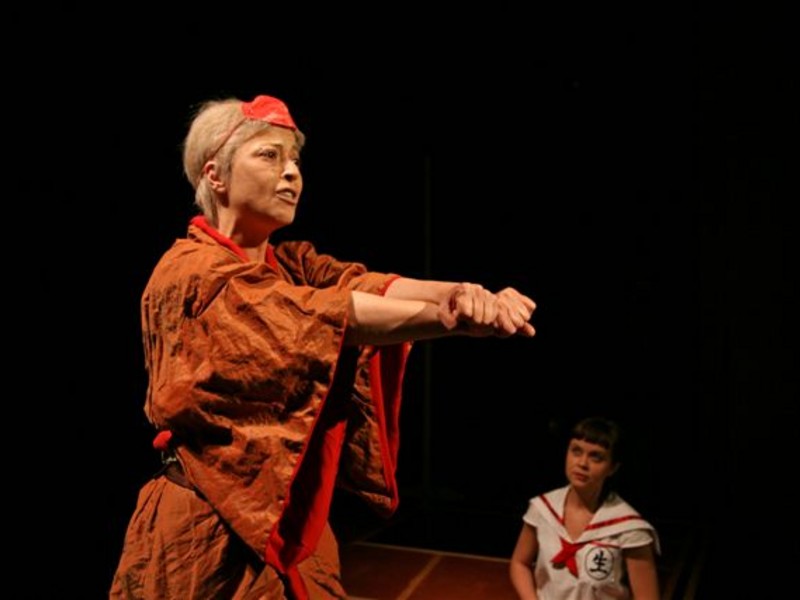Black Rain |
Herzliya Theatre Ensemble in Cooperation with the Haifa Theatre
Premiere: May, 2007 |
|
|
Adaptation, Directing Ofira Henig
The song One star for all Research Yaniv Shachar | Assistant direction Ilanit Swissa | Preproduction Mali Ohana
|
 View Images
|
"I was watching an American action movie one evening. I can't even remember what it was about. An image from the movie stayed with me afterwards. It was the mushroom cloud of the Atom bomb dropped on Hiroshima, which was edited in a rather strange manner into that grade-b movie. The famous image engraved itself in my memory and haunted me for some time. I quickly understood that the aesthetics of horror had profoundly affected me. It had shaken me greatly and led me on a journey in which I became acquainted with and learned the story of Hiroshima. I was joined on this journey with Yaniv Shahar, a friend and companion, who helped me to reach official documents, statistics and poetic materials, which in turn became the inspirational base for this piece. At times, as a director, I find it difficult to decide what direction my next work will take. This time, it was evident to me that that the story of Hiroshima, and all that pertains to it, will be the subject of my next work. I had no doubts. There was no other possibility. The presence of the idea and the image brought such conviction with them. I then turned to Shimon Bouzaglo, a poet and translator to write the play. The dialogue with Shimon was for me an issue of great importance. Figures were formed which would convey the narrative, situations, places, plays in time and illusive realities. Through this dialogue I was also exposed to beautiful musical material that then formed the conceptual base for the work. At this stage Amit Drori, a visual artist, and designers Jacky Shemesh and Shiri Asa joined the team. Through their aesthetic language and unique points of view of the theatrical event, the dramatic structure of the work changed shape and form. The working process on the play worked in parallel lines and involved casting within it. Some of the parts were written with specific actors in mind. This entails a demanding and difficult process that is made possible only through total dedication and team work and a free conception of the idea of Theater. The story of Hiroshima affords me the possibility to deal with issues of morality and humanity that are intertwined with the development of weapons of mass destruction. This work took us out of the realm of political theater; it did not work within the binary of good vs. evil, no victim or victimizer, no message of pro or con. We all stopped and listened. We listened to a past of horror and carnage, with the hope of better understanding a threatening present. I stopped in order to better understand whether something can be done to prevent the horrors of the past recurring. Whether we know enough and whether we want to know everything. I stopped and felt a dull scream echoing from my throat, reverberating in the face of a humanity gradually losing its sanity. This scream led me to the understanding that my work would deal with this subject." Ofira Henig |
